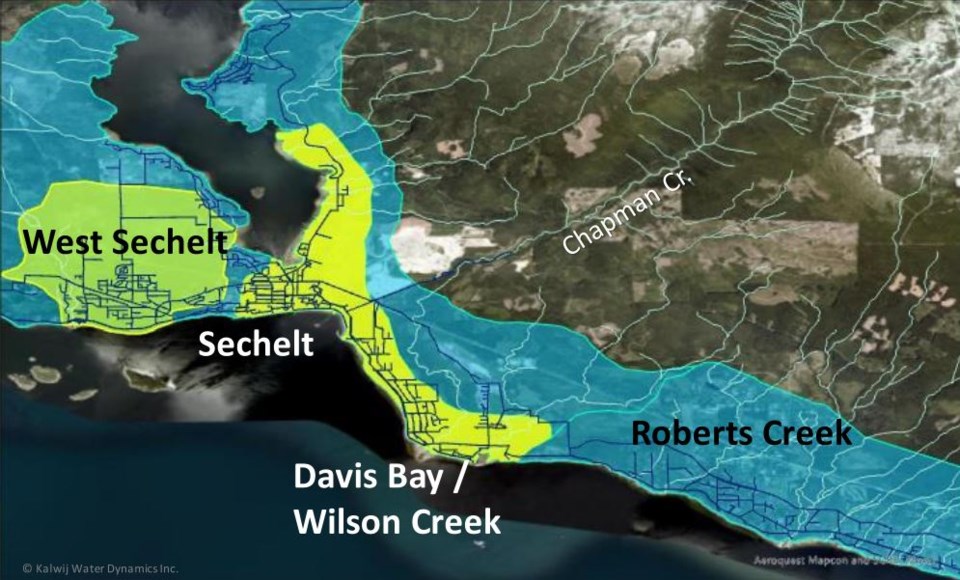Pending approvals from the District of Sechelt and the shíshálh Nation, test well drilling at five sites in and around Sechelt is poised to begin as early as May.
The Sunshine Coast Regional District (SCRD) board was briefed on the next steps in its Phase 5 groundwater exploration program at its Jan. 25 meeting. It was also advised by consulting firm Kalwij Water Dynamics that even if this year’s test drilling program pinpoints a viable well site, it will take six to seven years before local customers would be enjoying water from any new source.
Last year, Kalwij completed desktop reviews of the area for the SCRD to identify sites with groundwater potential that could be developed to supplement Chapman system water flows during peak demand times. That revealed four locations with promise within Sechelt: at Whitaker Park (ts’uḵw’um area), near the airport, at Proctor Bike Park (downtown neighbourhood) and at Kinnikinnick Park. A fifth spot of interest is in Roberts Creek, near that community’s fire hall. Locations at Mission Park (in ts’uḵw’um) and at Cliff Gilker Park (Roberts Creek) have been identified as back-up sites, should permission not be granted for drilling at any of the preferred areas.
Consultant Ineke Kalwij explained that while provincial data indicates there are 24 water aquifers in various lower Coast locations, the review focused on finding groundwater sources close to Sechelt, where a large portion of the Chapman system clients reside. Other key factors in identifying drilling locations with good development potential included proximity to existing water system mains and site elevations. Also of importance was ensuring potential drilling locations were on lands already owned by Coast local governments.
Next steps for the project will be securing approval from Sechelt to do the work on the municipally owned sites and securing the Nation’s okay for all five locations. Once those are in place, archaeological site reviews would be required and if those are obtained, then site logistics would be confirmed, followed by drilling of test wells. Kalwij noted that if the test drilling is completed this summer, the results could be delivered to the SCRD in September.



